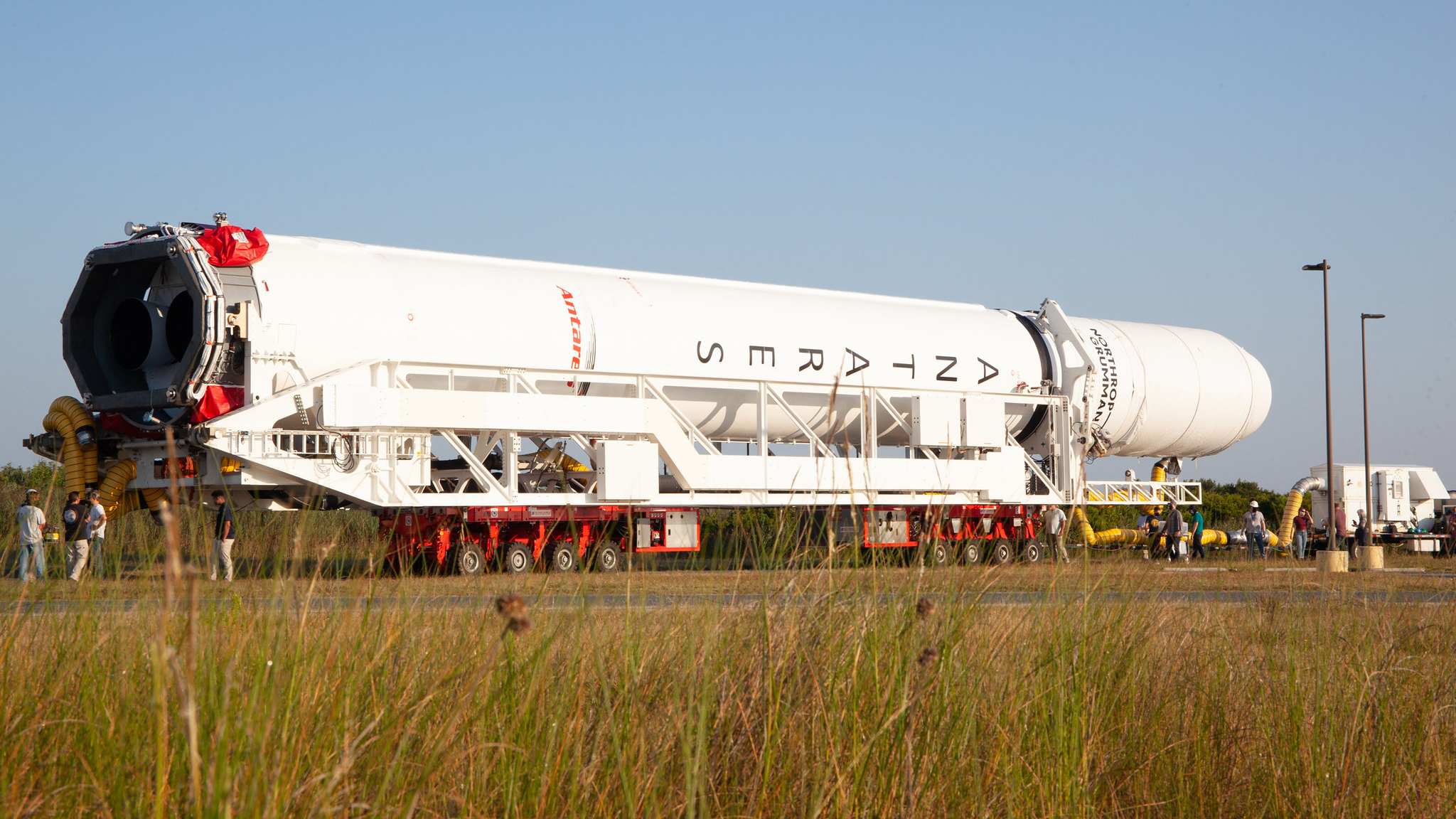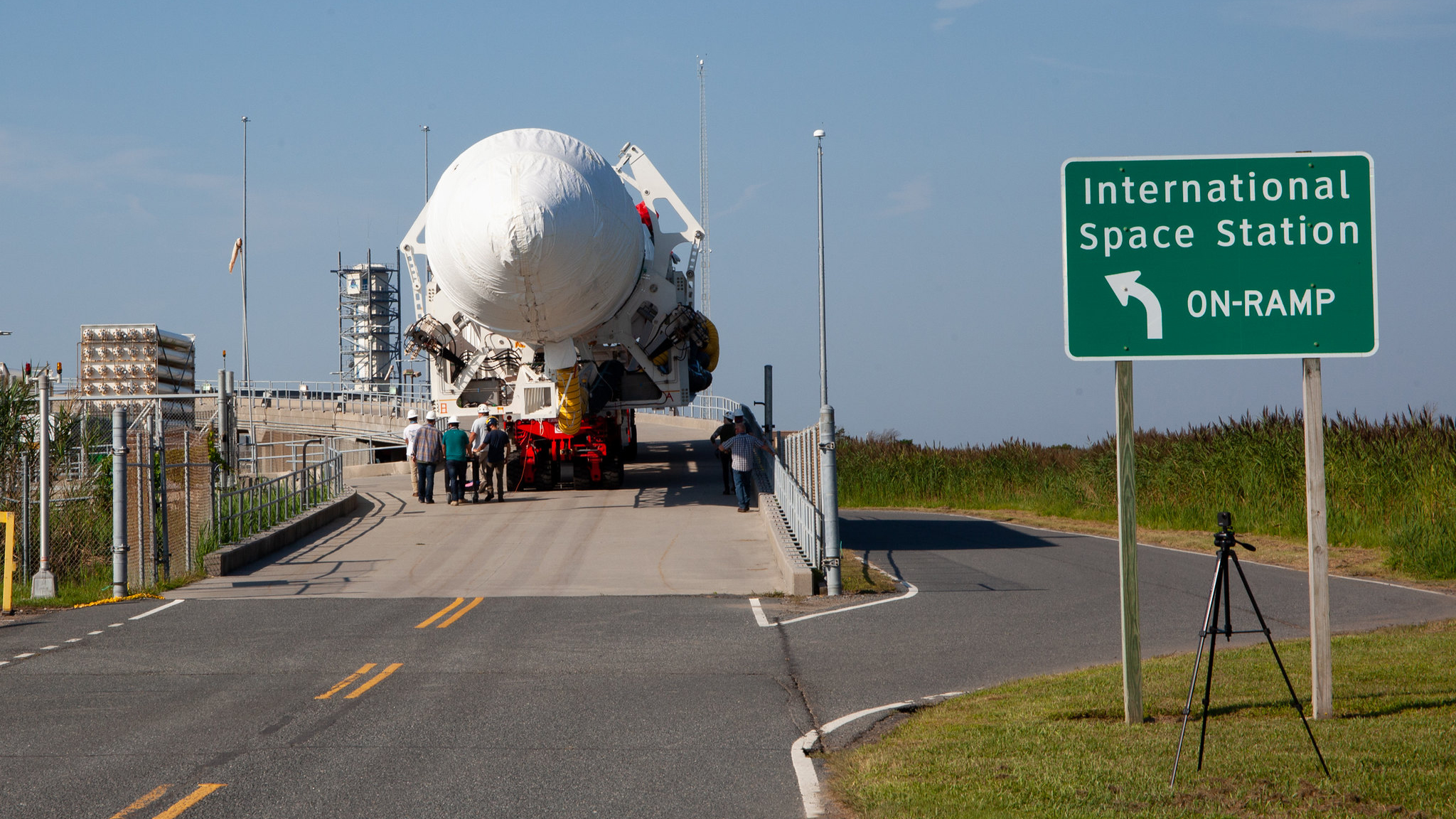Northrop Grumman will launch a Cygnus cargo ship to the space station today. Here's how to watch live.
Update for 5 p.m. ET: Liftoff has been delayed by five minutes and is now scheduled for 6:01 p.m. EDT (2201 GMT), as engineers had to "resolve a minor ground support issue," Northrop Grumman tweeted.
WALLOPS ISLAND, Va. — NASA and Northrop Grumman are teaming up to launch a cargo capsule to the International Space Station today (Aug. 10), and you can watch the action live online.
The Cygnus NG-16 spacecraft will blast off atop a two-stage Antares rocket from Pad 09A at Wallops Flight Facility in Virginia at 5:56 p.m. EDT (2156 GMT) as part of the company's 16th resupply mission to the ISS for NASA.
You can watch the launch live here on Space.com, courtesy of NASA TV, beginning at 5:30 p.m. EDT (2130 GMT). You can also watch it directly from NASA TV here.
Related: Blobs in space and other cool science launching to the space station
Northrop Grumman is one of NASA's commercial partners that keeps the space station well-stocked with supplies as part of the agency's commercial cargo resupply program. The silvery spacecraft is loaded with 8,200 pounds (3,700 kilograms) of crew supplies, hardware and research experiments for the Expedition 65 crew.
Following liftoff, the bus-sized Cygnus spacecraft will spend two days in space chasing after the International Space Station (ISS). Once it arrives, the spacecraft will berth to the orbital outpost with the help of the station's Canadarm2 robotic arm.
Breaking space news, the latest updates on rocket launches, skywatching events and more!
"I'm looking forward to our sweet 16 mission in support of NASA and our commercial partners as we continue the journey of human space exploration," Frank DeMauro, vice president and general manager of Northrop Grumman's Tactical Space Systems division said during a news conference Monday (Aug. 9).
Northrop Grumman built both the rocket and the spacecraft, and the contractor has a tradition of naming each of its cargo capsules after an individual who made a significant contribution to human spaceflight. For this mission, the Cygnus is named the S.S. Ellison Onizuka, after the first Asian American astronaut, who lost his life on the space shuttle Challenger in 1986.
Born in Hawaii, Onizuka always dreamt about flying to the stars. He got his chance in 1978 when he was selected by NASA to become an astronaut. Following a successful career in the military as a test pilot, Onizuka was an inspiration for the Asian-American community and for those who wanted to explore new horizons.
"The S.S. Ellison Onizuka will serve as a shining example that racial barriers and glass ceilings are meant to be shattered," DeMauro said during Monday's briefing.
According to NASA officials, the S.S. Ellison Onizuka will remain attached to the space station for approximately three months. At the end of its mission, the space station astronauts will load it with trash before sending it off for a destructive reentry into the Earth's atmosphere. (The freighter will burn up in the atmosphere and poses no threat to anyone on Earth.)



Five days prior to launch (Aug. 5), the team ran through a mission dress rehearsal, during which the launch conductors put the launch team through its paces. Then on Friday (Aug. 6), the rocket and spacecraft rolled to the pad and went through two days of system checkouts.
On Monday afternoon, approximately 24-hours before launch, the rocket was lowered to horizontal in order to open up the spacecraft for some last-minute payloads. These are time-sensitive payloads (like those dealing with biological sciences) that cannot sit inside the cargo craft for too long. Typically the Cygnus is packed weeks before liftoff.)
Kurt Eberly of Northrop Grumman said in Monday's news conference that the ability to put payloads into the spacecraft later was added to the Antares rocket specifically for the company's second commercial resupply services contract (CRS-2) with NASA, which started last year. The rocket now flies in what the company calls its 230+ configuration, which means that it has late load capabilities and can carry a variety of cargo, including larger objects that may not fit inside other spacecraft. (That's also in part due to the fact that the Cygnus berths to the space station at a larger port than the ones used by other vehicles.)
Weather forecasters have predicted there's an 80% chance of favorable weather conditions on Tuesday. The primary concerns are cumulus clouds. If needed, there are several backup launch opportunities, with the first being on Wednesday (Aug. 11).
"We're very excited to be a part of another commercial resupply mission," Brittney McKinley, Wallops range and Antares program manager at Wallops, said during Monday's briefing. "The Wallops team is ready to support the NG-16 mission with the launch of Antares and the Cygnus spacecraft."
"Range is green, all systems are nominal and we look forward to a beautiful Tuesday evening launch."
Follow Amy Thompson on Twitter @astrogingersnap. Follow us on Twitter @Spacedotcom or Facebook.

Amy Thompson is a Florida-based space and science journalist, who joined Space.com as a contributing writer in 2015. She's passionate about all things space and is a huge science and science-fiction geek. Star Wars is her favorite fandom, with that sassy little droid, R2D2 being her favorite. She studied science at the University of Florida, earning a degree in microbiology. Her work has also been published in Newsweek, VICE, Smithsonian, and many more. Now she chases rockets, writing about launches, commercial space, space station science, and everything in between.

